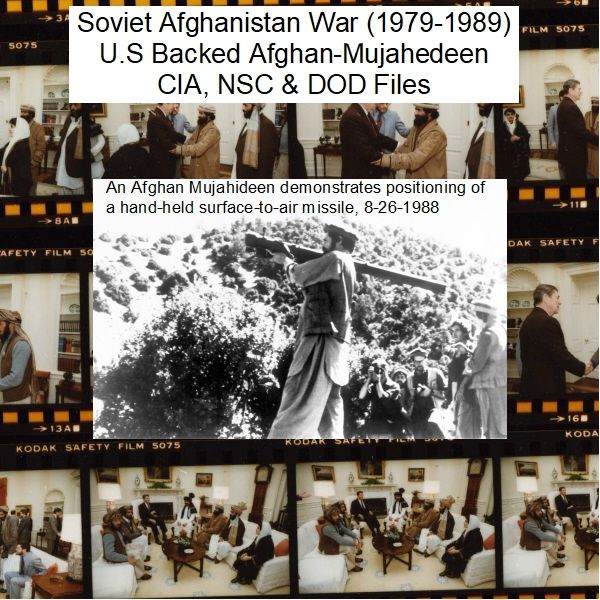
Soviet-Afghani-War (1979-1989) US. Backed Afghan-Mujahideen
$19.50
Description
Soviet-Afghan War: Timeline and Key Figures
Timeline of Main Events (1979-1989)
- 1979:Soviet Invasion of Afghanistan: The Soviet Union invades Afghanistan in December to prop up its puppet government. Thousands of Soviet troops enter the country and quickly establish military and political control over Kabul and significant portions of Afghanistan.
- Early Years (1979-1984):The Afghan Mujahideen, Afghan rebels, resist the Soviet occupation but are initially poorly equipped compared to the Soviet military.
- The United States, hoping to bog down the Soviet Union in a protracted conflict, provides limited support to the Mujahideen.
- Muslim fighters from various countries, including Saudi Arabia, join the Mujahideen, motivated by religious solidarity and opposition to communism.
- Mid-1980s (Around 1985):The US shifts its strategy from attrition to a more aggressive approach, aiming to inflict a decisive defeat on the Soviet Union.
- 1986:Stinger Missiles: The United States makes the critical decision to supply the Mujahideen with heat-seeking, shoulder-launched Stinger anti-aircraft missiles.
- Impact of Stingers: The Stingers prove highly effective against Soviet Mi-24D helicopter gunships. The Mujahideen successfully shoot down several, significantly boosting their morale and inflicting substantial losses on the Soviets. This is seen as a turning point in the war.
- 1988:Soviet Withdrawal Announced: Soviet President Mikhail Gorbachev announces his intention to withdraw Soviet forces from Afghanistan.
- February 1989:Soviet Withdrawal Complete: The last Soviet soldier leaves Afghanistan, marking the end of the Soviet-Afghan War.
- Post-Withdrawal (Mentioned in Retrospect):Soviet Foreign Minister Eduard Shevardnadze later reflects that the decision to withdraw from Afghanistan was a pivotal and difficult step, suggesting it contributed to the subsequent decline of Soviet influence and the eventual collapse of the Soviet Union.
- CIA analysis in 1983 had initially assessed that the Mujahideen would likely be unable to overcome Soviet firepower in the long run, highlighting the significant impact of increased US support, particularly the Stinger missiles.
- The war significantly impacted the opium trade in the region.
- Studies conducted after the war by the US Department of Defense analyzed Mujahideen guerrilla tactics and Soviet combat approaches in Afghanistan.
- FBI files cover aspects related to US Representative Charlie Wilson’s support for the Mujahideen, including investigations into potential corruption and other matters.
Cast of Characters and Brief Bios:
- Afghan Mujahideen: Afghan rebels who fought against the Soviet occupation of Afghanistan. They were initially ill-equipped but received increasing support from the US and other countries. Their diverse composition included various factions motivated by nationalism, Islamism, and opposition to communism.
- Soviet Forces: The military of the Soviet Union that invaded and occupied Afghanistan. They initially held a significant military advantage but faced challenges due to the terrain, the determined resistance of the Mujahideen, and ultimately the impact of US-supplied weaponry.
- Ronald Reagan: The President of the United States during a significant portion of the Soviet-Afghan War (1981-1989). He championed the idea of supporting the Mujahideen to counter global communist aggression and oversaw the shift to a more aggressive US strategy, including the provision of Stinger missiles.
- Mikhail Gorbachev: The leader of the Soviet Union who announced and oversaw the withdrawal of Soviet forces from Afghanistan in 1988-1989.
- Eduard Shevardnadze: The Soviet Foreign Minister who later reflected on the significance of the Soviet withdrawal from Afghanistan as a crucial step leading to broader changes within the Soviet sphere of influence.
- Charlie Wilson: A Democratic United States Representative from Texas who became a key figure in advocating for and securing increased US funding for the Afghan Mujahideen. FBI files document various investigations related to him.
- Edward Lynch: A consultant within the Office of Public Liaison during the Reagan administration, involved in matters related to the Soviet-Afghan War.
- Vincent Cannistraro: A former CIA officer who served as the Director for Intelligence Programs at the National Security Council from 1985-1987, likely involved in policy decisions regarding support for the Mujahideen.
- Nelson Ledsky: A member of the European and Soviet Affairs Directorate at the National Security Council, suggesting involvement in the US policy response to the Soviet presence in Afghanistan.
- Jimmy Carter: The President of the United States at the time of the Soviet invasion in 1979 (1977-1981). His administration’s initial response and policies towards Afghanistan are documented in the Department of State records.
Soviet-Afghani-War (1979-1989) U.S. Backed Afghan-Mujahideen CIA, DOD, FBI and State Dept Files
14,361 pages of CIA files, Department of Defense studies, Department of State documentary history and Reagan Administration files. A unique aspect of this collection is that it has recounting of Soviet-Afghan War battles from both Soviet officers and Mujahideen resistance fighters.
In 1979, the Soviet Union invaded Afghanistan to protect its puppet government. By the end of December 1979, the Soviet Union sent thousands of troops into Afghanistan and immediately assumed complete military and political control of Kabul and large portions of the country. The Afghan-Mujahedeen, Afghan rebels fighting Soviet occupation, were ill-equipped to defeat the far superior Soviet forces. Initially hoping to tie Moscow down in a prolonged war of attrition, the US provided the Mujahideen with only limited support.
Muslims from many countries, including Saudi Arabia, joined groups to support the Afghan mujahideen as an expression of their religious solidarity as well as to fight communism. President Reagan championed the idea that if the Afghan Mujahideen forces actually defeated the Soviets in Afghanistan, the broader impact would be to stem future global communist aggression. By 1985, America’s attrition strategy gave way to a more aggressive approach intended to inflict a humiliating defeat on the Soviet Union.
The most audacious move was a 1986 decision to supply the Mujahideen with heat-seeking, shoulder-launched Stinger antiaircraft missiles. These missiles turned the tide of the war by giving Afghan guerrillas the capability to destroy their most dreaded enemy weapon in the rugged Afghan battlefield, the Soviet Mi-24D helicopter gunship. The first three Stingers fired took down three gunships. Rebel morale soared overnight. Devastating Soviet losses mounted. A Soviet retreat was within sight.
In 1988, President Gorbachev announced his intention to withdraw Soviet forces from Afghanistan. The last Soviet soldier left in February 1989. Soviet Foreign Minister Shevardnadze later lamented, “The decision to leave Afghanistan was the first and most difficult step. Everything else flowed from that.” This view implied that the Soviet defeat in Afghanistan led to the eventual fall of influence over the Soviet Bloc and collapse of the Soviet Union.
CIA Files
1,643 pages of CIA files dating from 1975 to 1989. Includes background on early moves by the Soviets in Afghanistan, expansion of fighting into Northern Pakistan, power struggle among Afghans, analysis of dangers to Pakistan from Soviet activity in Afghanistan, periodical situation reports on the progress of Soviet activity, Afghan groups collaborating with the Soviets and those resisting the Soviets. The 1983 assessment of the Mujahideen by the CIA that they would not be able to in the end, overcome Soviet superior firepower. Reports on the improvement of outcomes against the Soviets by the Afghan resistance after increased U.S. support. Reports on increases in military supplies delivered via Pakistan and Iran to insurgent groups fighting in Afghanistan. The effect of the war on the opium trade.
Department of Defense Studies
Other Side of the Mountain Mujahideen Tactics in the Soviet-Afghan War (1995)
This study focuses on guerrilla warfare in the Soviet-Afghan war from the guerrilla’s perspective. To capture this perspective and the tactical experience of the Mujahideen, the United States Marine Corps commissioned this study and sent two retired combat veterans to interview Mujahideen.
Bear Went Over the Mountain Soviet Combat Tactics in Afghanistan (1996)
Defense Department translation of a report by the Russian Frunze Military Academy. In Afghanistan the Soviet army found its tactics inadequate to meet the challenges posed by the difficult terrain and the highly motivated Mujahideen freedom fighters. To capture the lessons their tactical leaders learned in Afghanistan and to explain the change in tactics that followed, the Frunze Military Academy compiled this book for their command and general staff combat arms officers. The lessons are valuable not just for Russian officers, but for the tactical training of platoon, company and battalion leaders of any nation likely to engage in conflicts involving civil war, guerrilla forces and rough terrain.
Other works include:
The Soviet- Afghan War, 1979-1989 Failures in Irregular Warfare (2008)
The Taliban. An Organizational Analysis (2008)
Soviet-Afghan War A Superpower’s Inability to Deny Insurgency (2009)
We Have Not Learned How to Wage War There – The Soviet Approach in Afghanistan 1979-1989 (2011)
Soviet Withdrawal from Afghanistan Strategic Context (2012)
The Soviet Withdrawal from Afghanistan Strategic Context (2013)
Department of State Documentary Histories
5,343 pages of documentary history by the Department of State’s Office of the Historian. These volumes document the major foreign policy decisions taken by the Carter and Reagan administrations in response to the Soviet intervention in Afghanistan. Transcripts of documentation in theses volumes includes memoranda; records of discussions within the U.S. policymaking community as well as with foreign officials; cables to and from U.S. diplomatic as well as intelligence posts; and papers that set forth policy issues and options and that show decisions or actions taken. The documentation emphasizes both the process by which U.S. policy developed and the major consequences of its implementation.
Foreign Relations Of The United States 1977–1980 Volume XII Afghanistan is the first volume presented in this collection. In addition to this volume is Foreign Relations, 1977–1980, Volume XIX, South Asia. Its chapter on Pakistan provides a broader context of the Carter Administration’s policy in Afghanistan. Also included is Foreign Relations, 1977–1980, Volume VI, Soviet Union for a broader view of U.S.-Soviet relations during this period; the crisis in Afghanistan, coming already at a low point in relations between the United States and the Soviet Union, is heavily documented in this volume.
Coverage of the Reagan Administration and this issue is present in this collection in Foreign Relations of the United States, 1981–1988, Volume III, Soviet Union, January 1981–January 1983. Foreign Relations of the United States, 1981–1988 and Volume VI, Soviet Union, October 1986–January 1989.
President Ronald Reagan Administration White House Files
An assortment of files related to Administration policy and the Soviet-Afghan War. Includes papers from Edward Lynch who worked as a consultant within the Office of Public Liaison. Vincent Cannistraro, a former CIA officer, who served as the Director for Intelligence Programs at the National Security Council from 1985-1987, and Nelson Ledsky, European and Soviet Affairs Directorate at the National Security Council.
Charlie Wilson FBI Files
5,530 pages of FBI Files covering former United States Representative Charlie Wilson
Charles “Charlie” Nesbitt Wilson (1933-2010) served 12-terms as a Democratic United States Representative from Texas’s 2nd congressional district. He became widely known for his support for funding the Afghan Mujahedeen resistance to USSR occupation. Contains FBI investigative records from 1972 to 1999, includes joint US government investigation into foreign corrupt practices. The material here relates to a side issue developed in the investigation concerning whether or not Wilson received a substantial kickback from a foreign government for his role in securing a sizable appropriation to arm the Afghan resistance; in 1999, the Department of Justice declined to prosecute, but Wilson did pay a sizable penalty for making loans to himself from his campaign accounts. Other material released includes investigative material related to a possible election law violation by an opponent of Wilson in 1972, the investigation of several threats made against Wilson, the Bureau’s investigation into his possible role in the late 1980’s/early 1990’s House banking scandal, and some other small matters.













Related products
-
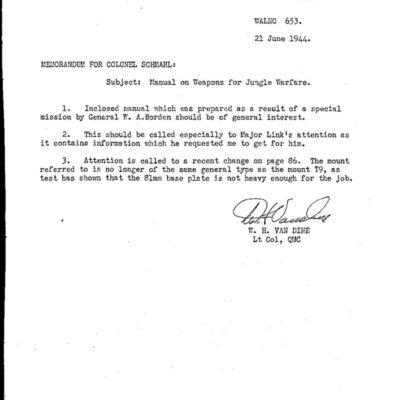

World War II Manual on Weapons for Jungle Warfare (1944)
$1.99 Add to Cart -


Civil War: Battle of Antietam (Sharpsburg) – National Park Service Archives
$9.99 Add to Cart -
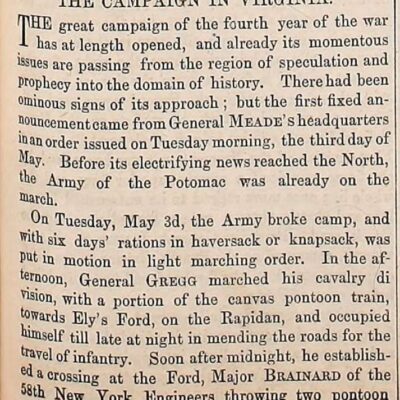
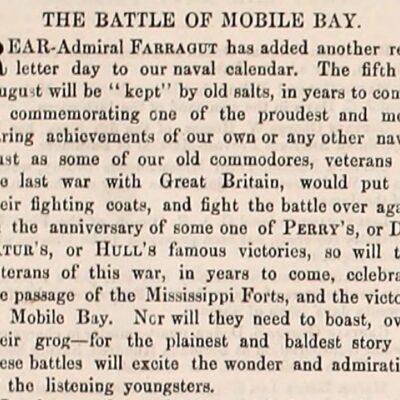
Civil War: Army Navy Journal & Gazette Volume 1 (1863 – 1864)
$19.50 Add to Cart -
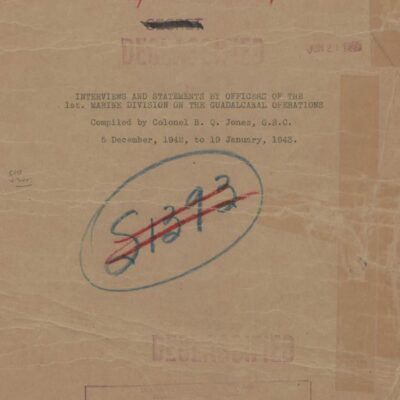
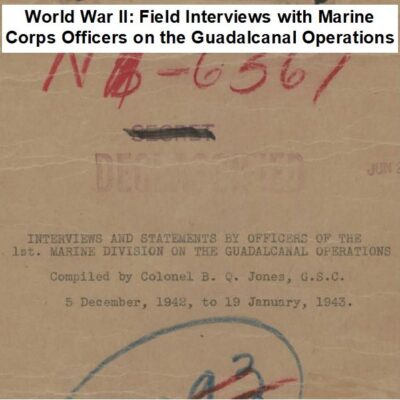
World War II: Marine Corps Officer Interviews on Guadalcanal Operations
$3.94 Add to Cart